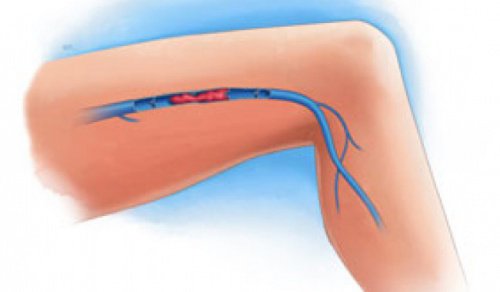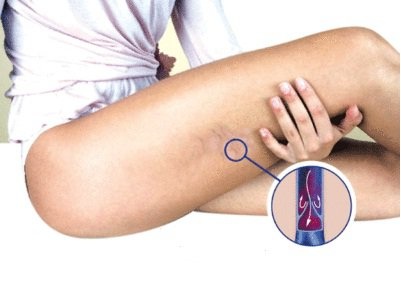Symptoms of a Blood Clot in the Legs

Many women have varicose veins in their legs, a condition that isn’t just unsightly, but also dangerous. You can never ignore this condition. Whether large or small, it’s important to keep them under control, periodically follow up with your doctor, and know the symptoms of a blood clot in the legs so that you can avoid serious health issues.
Varicose veins are a result of poor circulation. But, if your blood thickens, it could lead to a dangerous clot that completely obstructs proper blood flow. What can you do to prevent this condition? What symptoms are usually associated with a blood clot in the legs?
Today on our site, we’re going to answer those questions for the sake of your health and peace of mind.
What is a blood clot?
The name for this kind of blood clot in your veins is a venous thrombosis. It usually happens in the deep veins of the body where blood flow is the poorest, like the calves and thighs.
The greatest risk is that the clot could dislodge and travel through the bloodstream to a pulmonary artery. That would cut off circulation and cause what’s known as a pulmonary embolism. This is a very serious risk that you need to be aware of.
While it’s true that this problem usually affects people between 50-60, this is something that younger women should not ignore. Your health depends on the condition of your varicose veins.
According to doctors, clots are more likely to dislodge if they’re in the upper part of the legs or thighs. This is why periodic checkups are so important, and if think early intervention might be necessary, you shoul do it for our own safety.
You might like:
Symptoms of a blood clot in the legs

What symptoms should you be looking for if you think you might have a blood clot in your leg? First of all, there are two types of venous thrombosis: superficial and deep. The second kind is more dangerous. Let’s take a look at the symptoms of these two types of blood clot (they don’t necessarily happen in your legs):
Firstly, there’ superficial venous thrombosis. This type is easy to recognize. You’ll notice that the vein is enlarged, like a cord; it will be hard, blue, and painful to the touch. It’s easily visible and very painful. The area will often feel hot, along with almost unbearable pressure, late in the day.
You have to be careful with this type of thrombosis because, on top of being the first step to a more severe deep vein thrombosis, it’s also at risk of infection, or what’s known as phlebitis.
Secondly, there’s deep vein thrombosis. Unfortunately, it often goes unnoticed when a superficial thrombosis becomes. So, keep in mind the following symptoms:
- A feeling of heavy pressure in areas with the most noticeable and swollen varicose veins.
- An almost unbearable sensation of warmth in the area.
- A tingling that goes up the leg to the groin.
- The leg feels hard and very rigid to the touch.
- Be very careful if the skin turns blue or becomes very pale, this means the blood from your arteries is having a difficult time reaching the leg.
Can you prevent a blood clot in the legs?
Almost all varicose vein problems are genetic in origin. A genetic predisposition combined with unhealthy lifestyle choices like poor diet, or being obese, are very likely to result in varicose veins.
Read more:
Homemade Mask for Varicose Veins with Aloe Vera and Apple Cider Vinegar
When you notice varicose veins beginning to appear, you need to put all your efforts into avoiding a superficial vein thrombosis:
- Exercise daily. Getting out and walking for a half an hour a day, for example, will help a lot. Swimming or biking also good options.
- Take cold showers.
- Avoid salt in your diet, as well as sugar, fats, snacks, soft drinks, refined white flour… any foods that contribute to poor circulation.
- Drink plenty of fluids, including natural juices and herbal infusions of horsetail, pennyroyal, or rosemary.
- Horse chestnut is also used to treat varicose veins. Some effective creams even use it as the main ingredient. You can find it in pharmacies and it’s very helpful for treating varicose veins.
- If your veins are very noticeable and have a blue color, consult your doctor about the possibility of an operation. You don’t want the risk of clot hanging like a constant threat over your head.. Always follow your doctor’s advice.
No surprise here: a healthy lifestyle is one of the best ways to prevent both the minor and serious health issues involved with varicose veins. But, now that you know some of the symptoms involved in a blood clot, you’ll also be able to seek help if you think you might have one in your legs.
This text is provided for informational purposes only and does not replace consultation with a professional. If in doubt, consult your specialist.








